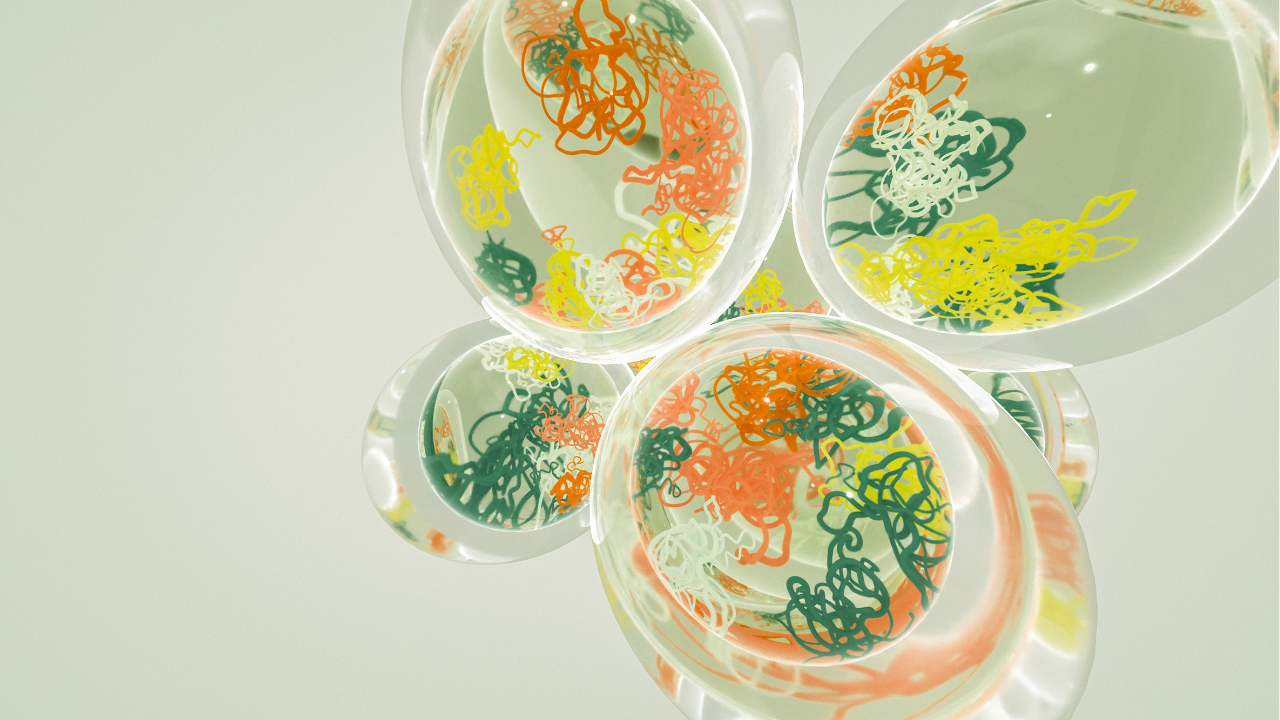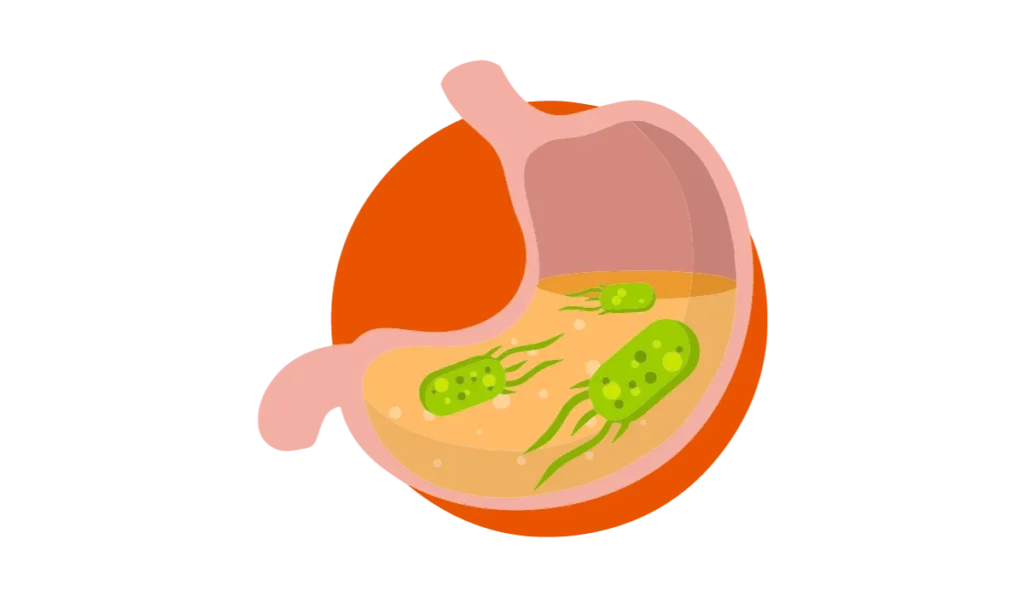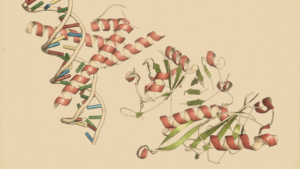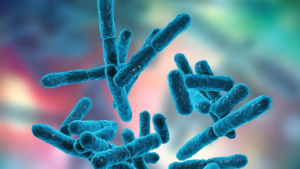5 Shocking Facts on Enterochromaffin Cells and Hyperalgesia
Discover the pivotal role of enterochromaffin cells and hyperalgesia and their connection to gut microbiota in our latest insightful article.

In the intricate world of human physiology, the connection between enterochromaffin cells and hyperalgesia offers a fascinating insight into how our bodies perceive and manage pain.
These cells, crucial components in the gut microbiota, play a pivotal role in chronic pain and are deeply intertwined with the microbiota-gut-brain axis.
This article delves into how serotonin production in the gut influences overall health and pain perception, explores the potential of probiotics in pain management, and examines the impact of gut microbiota on neuropsychiatric diseases.
Unraveling these connections provides a deeper understanding of pain mechanisms and novel approaches to treatment.

In This Article:
Key Findings
- Gut Microbiota's Role in Hyperalgesia: The study underscores the extensive role of gut microbiota in the peripheral regulation mechanism of chronic pain, including hyperalgesia, which is influenced by various factors like diet, stress, and antibiotics. The interaction between gut microbiota and the host through the microbe-gut-organ axis is significant for health.
- Enterochromaffin Cells (ECs) as Information Transmitters: ECs, a subtype of intestinal enteroendocrine cells, produce and release 90% of the body's serotonin. These cells are essential for various bodily functions and act as bidirectional information transmitters among the intestinal lumen, intestinal epithelial cells, and primary afferent nerve fibers, playing a fundamental role in the microbiota-gut-brain interaction.
- Impact of Gut Microbiota on Pain Regulation: The gut microbiota has been identified as a key regulator of pain, mediating pain tolerance or sensitization through diverse pathways. Clinical studies have reported changes in gut microbiota composition in various chronic pain-related diseases.
- Probiotics in Pain Management: Certain bacteria and prebiotics, like Lactobacillus paracasei and Bifidobacterium infantis, can normalize the pain threshold. The use of specific strains of probiotics has been shown to induce analgesic effects, offering a new avenue for treating chronic pain.
- Gut Microbiota's Link to Brain Structure and Function: The imbalance in gut microbiota can lead to structural and metabolic changes in chronic pain-related brain areas. It affects the morphology, activity, and gene expression of critical brain regions like the amygdala and anterior cingulate cortex, impacting chronic pain and mood disorders
Enterochromaffin Cells and Hyperalgesia: A New Frontier in Pain Management
Hyperalgesia, characterized by an amplified pain response, significantly impacts patient health and quality of life.
This condition involves complex mechanisms, including glutamate/NMDA receptor-mediated sensitization and microglia activation A Trusted Source
Basbaum, A. I., Bautista, D. M., Scherrer, G., Julius, D. (2009). Cellular and Molecular Mechanisms of Pain. Cell 139, 267–284. doi: 10.1016/j.cell.2009.09.028PubMed AbstractCrossRef Full TextGoogle Scholar.
A pivotal aspect of its regulation is the gut microbiota,
influencing not only visceral but also neuropathic and metabolic disease-induced hyperalgesia A Trusted Source
Pellegrini, C., Antonioli, L., Colucci, R., Blandizzi, C., Fornai, M. (2018). Interplay Among Gut Microbiota, Intestinal Mucosal Barrier and Enteric Neuro-Immune System: A Common Path to Neurodegenerative Diseases? Acta Neuropathol. 136, 345–361. doi: 10.1007/s00401-018-1856-5 PubMed AbstractCrossRef Full TextGoogle Scholar A Trusted Source
Yang, C., Fang, X., Zhan, G., Huang, N., Li, S., Bi, J., et al. (2019). Key Role of Gut Microbiota in Anhedonia-Like Phenotype in Rodents With Neuropathic Pain. Transl. Psychiatry 9, 57. doi: 10.1038/s41398-019-0379-8 PubMed AbstractCrossRef Full TextGoogle Scholar.
The gut microbiota, established early in life, is crucial for host health, and is affected by diet, stress, and antibiotics.
Its dynamic ecosystem is integral to the microbe-gut-organ axis, playing a significant role in neuropsychiatric disorders A Trusted Source
Pellegrini, C., Antonioli, L., Colucci, R., Blandizzi, C., Fornai, M. (2018). Interplay Among Gut Microbiota, Intestinal Mucosal Barrier and Enteric Neuro-Immune System: A Common Path to Neurodegenerative Diseases? Acta Neuropathol. 136, 345–361. doi: 10.1007/s00401-018-1856-5 PubMed AbstractCrossRef Full TextGoogle Scholar A Trusted Source
Zhan, G., Yang, N., Li, S., Huang, N., Fang, X., Zhang, J., et al. (2018). Abnormal Gut Microbiota Composition Contributes to Cognitive Dysfunction in SAMP8 Mice. Aging (Albany NY) 10, 1257–1267. doi: 10.18632/aging.101464 PubMed AbstractCrossRef Full TextGoogle Scholar.
Its impact extends to various pain types, including neuropathic and inflammatory pain, and even opioid tolerance A Trusted Source
Guo, R., Chen, L. H., Xing, C., Liu, T. (2019). Pain Regulation by Gut Microbiota: Molecular Mechanisms and Therapeutic Potential. Br. J. Anaesth. 123, 637–654. doi: 10.1016/j.bja.2019.07.026 PubMed AbstractCrossRef Full TextGoogle Scholar, suggesting that restoring healthy gut microbiota could be a novel approach to pain treatment A Trusted Source
Xu, H. M., Huang, H. L., Zhou, Y. L., Zhao, H. L., Xu, J., Shou, D. W., et al. (2021). Fecal Microbiota Transplantation: A New Therapeutic Attempt From the Gut to the Brain. Gastroenterol. Res. Pract. 2021, 6699268. doi: 10.1155/2021/6699268 PubMed AbstractCrossRef Full TextGoogle Scholar.
A key player in this interaction is the enterochromaffin cells (ECs), abundant in the colon and closely associated with the gut microbiota.
Despite representing less than 1% of intestinal epithelial cells, ECs produce 90% of the body's serotonin, crucial for numerous bodily functions A Trusted Source
Matthes, S., Bader, M. (2018). Peripheral Serotonin Synthesis as a New Drug Target. Trends Pharmacol. Sci. 39, 560–572. doi: 10.1016/j.tips.2018.03.004 PubMed AbstractCrossRef Full TextGoogle Scholar .
Their electro-excitatory nature, akin to primary sensory cells, allows them to transmit information between the gut and nerve fibers,
making them central to the microbiota-gut-brain axis in chronic pain, depression, and cognition A Trusted Source
Rhee, S. H., Pothoulakis, C., Mayer, E. A. (2009). Principles and Clinical Implications of the Brain-Gut-Enteric Microbiota Axis. Nat. Rev. Gastroenterol. Hepatol. 6, 306–314. doi: 10.1038/nrgastro.2009.35 PubMed AbstractCrossRef Full TextGoogle Scholar.
This understanding opens up new avenues in pain management, focusing on the gut-brain connection and the vital role of ECs.
Enterochromaffin Cells and Hyperalgesia
Unraveling the Gut-Brain Connection in Chronic Pain
Recent research has shed light on the critical role of gut microbiota in regulating chronic pain, emphasizing its influence on pain tolerance and sensitization through various pathways.

Studies, including those by Braundmeier-Fleming, 2016 and Clos-Garcia, 2019, A Trusted Source
Braundmeier-Fleming, A., Russell, N. T., Yang, W., Nas, M. Y., Yaggie, R. E., Berry, M., et al. (2016). Stool-Based Biomarkers of Interstitial Cystitis/Bladder Pain Syndrome. Sci. Rep. 6, 26083. doi: 10.1038/srep26083 PubMed AbstractCrossRef Full TextGoogle Scholar A Trusted Source
Clos-Garcia, M., Andrés-Marin, N., Fernández-Eulate, G., Abecia, L., Lavín, J. L., Van Liempd, S., et al. (2019). Gut Microbiome and Serum Metabolome Analyses Identify Molecular Biomarkers and Altered Glutamate Metabolism in Fibromyalgia. EBioMedicine 46, 499–511. doi: 10.1016/j.ebiom.2019.07.031 PubMed AbstractCrossRef Full TextGoogle Scholar
have revealed significant changes in the gut microbiota composition in chronic pain conditions like fibromyalgia and bladder pain syndrome.
These findings underscore the importance of understanding the microbiota-gut-brain axis and its implications for managing chronic pain, emphasizing the potential of targeting gut health, including the use of probiotics, to alleviate hyperalgesia.
This emerging field opens new avenues for pain management and highlights the interplay between enterochromaffin cells, serotonin production, and neuropsychiatric health.
The Gut Microbiota's Role in Chronic Pain
In the realm of gut microbiota studies, researchers often use antibiotics to create mouse models with reduced microbial activity.
These models help investigate the link between gut microbes and pain sensitivity A Trusted Source
Yang, C., Fang, X., Zhan, G., Huang, N., Li, S., Bi, J., et al. (2019). Key Role of Gut Microbiota in Anhedonia-Like Phenotype in Rodents With Neuropathic Pain. Transl. Psychiatry 9, 57. doi: 10.1038/s41398-019-0379-8 PubMed AbstractCrossRef Full TextGoogle Scholar A Trusted Source
Zhang, J., Bi, J. J., Guo, G. J., Yang, L., Zhu, B., Zhan, G. F., et al. (2019). Abnormal Composition of Gut Microbiota Contributes to Delirium-Like Behaviors After Abdominal Surgery in Mice. CNS Neurosci. Ther. 25, 685–696. doi: 10.1111/cns.13103 PubMed AbstractCrossRef Full TextGoogle Scholar.
To assess pain responses, scientists employ methods like the von Frey test for mechanical sensitivity, the cold plantar assay for cold sensitivity, the Hargreaves test for heat sensitivity, and the tail-flick test.
Surprisingly, the impact of antibiotics on gut microbiota and its connection to pain varies across studies A Trusted Source
Shen, S., Lim, G., You, Z., Ding, W., Huang, P., Ran, C., et al. (2017). Gut Microbiota Is Critical for the Induction of Chemotherapy-Induced Pain. Nat. Neurosci. 20, 1213–1216. doi: 10.1038/nn.4606 PubMed AbstractCrossRef Full TextGoogle Scholar A Trusted Source
Yang, C., Fang, X., Zhan, G., Huang, N., Li, S., Bi, J., et al. (2019). Key Role of Gut Microbiota in Anhedonia-Like Phenotype in Rodents With Neuropathic Pain. Transl. Psychiatry 9, 57. doi: 10.1038/s41398-019-0379-8 PubMed AbstractCrossRef Full TextGoogle Scholar.
One intriguing finding suggests that the absence of gut microbiota might actually protect against hyperalgesia (increased pain sensitivity).
Compared to normal mice, germ-free (GF) mice experience less severe pain reactions when exposed to inflammatory substances like carrageenan, lipopolysaccharide (LPS), tumor necrosis factor (TNF)-alpha, interleukin (IL)-1beta, and chemokine (C-X-C motif) ligand 1 (CXCL1).
This protective effect can be reversed when gut microbiota is reintroduced or when IL-10 antagonists are administered A Trusted Source
Amaral, F. A., Sachs, D., Costa, V. V., Fagundes, C. T., Cisalpino, D., Cunha, T. M., et al. (2008). Commensal Microbiota Is Fundamental for the Development of Inflammatory Pain. Proc. Natl. Acad. Sci. U. S. A. 105, 2193–2197. doi: 10.1073/pnas.0711891105 PubMed AbstractCrossRef Full TextGoogle Scholar.
Similarly, in mice subjected to neuropathic pain from chemotherapy drugs or chronic nerve injury, GF mice or those treated with antibiotics show reduced mechanical hyperalgesia.
However, restoring their gut microbiota can undo this protective effect, promoting chemotherapy-induced mechanical hyperalgesia A Trusted Source
Ramakrishna, C., Corleto, J., Ruegger, P. M., Logan, G. D., Peacock, B. B., Mendonca, S., et al. (2019). Dominant Role of the Gut Microbiota in Chemotherapy Induced Neuropathic Pain. Sci. Rep. 9, 20324. doi: 10.1038/s41598-019-56832-x PubMed AbstractCrossRef Full TextGoogle Scholar A Trusted Source
Ding, W., You, Z., Chen, Q., Yang, L., Doheny, J., Zhou, X., et al. (2021). Gut Microbiota Influences Neuropathic Pain Through Modulating Proinflammatory and Anti-Inflammatory T Cells. Anesth. Analg. 132, 1146–1155. doi: 10.1213/ane.0000000000005155PubMed AbstractCrossRef Full TextGoogle Scholar.
On the flip side, some studies suggest that antibiotic-induced gut microbiota imbalance in mice can lead to increased pain sensitivity,
along with anxiety, depression-like behaviors, and memory issues A Trusted Source
Yang, C., Fang, X., Zhan, G., Huang, N., Li, S., Bi, J., et al. (2019). Key Role of Gut Microbiota in Anhedonia-Like Phenotype in Rodents With Neuropathic Pain. Transl. Psychiatry 9, 57. doi: 10.1038/s41398-019-0379-8 PubMed AbstractCrossRef Full TextGoogle Scholar.
Transplanting gut microbiota from rats susceptible to anhedonia (lack of pleasure) into antibiotic-treated rats worsens chronic pain and depression-like symptoms A Trusted Source
Yang, C., Fang, X., Zhan, G., Huang, N., Li, S., Bi, J., et al. (2019). Key Role of Gut Microbiota in Anhedonia-Like Phenotype in Rodents With Neuropathic Pain. Transl. Psychiatry 9, 57. doi: 10.1038/s41398-019-0379-8 PubMed AbstractCrossRef Full TextGoogle Scholar.
In mice with gut microbiota imbalance, the levels of cannabinoid receptor (CB) 2 are upregulated, while CB1 and μ opioid receptor expressions are downregulated.
These changes, along with increased production of IL-10, affect the pain response A Trusted Source
Aguilera, M., Cerdà-Cuéllar, M., Martínez, V. (2015). Antibiotic-Induced Dysbiosis Alters Host-Bacterial Interactions and Leads to Colonic Sensory and Motor Changes in Mice. Gut Microbes. 6, 10–23. doi: 10.4161/19490976.2014.990790 PubMed AbstractCrossRef Full TextGoogle Scholar .
While there are varying opinions on how gut microbiota imbalance impacts chronic pain, factors like antibiotic compatibility, timing of detection, dosage, and animal models can influence experimental outcomes.
Nevertheless, these studies collectively demonstrate that the symbiotic gut microbiota plays a role in hyperalgesia (increased pain sensitivity) in the host.
Access to beneficial bacteria or prebiotics holds promise for treating systemic diseases, including chronic pain.
Lactobacillus paracasei and Bifidobacterium infantis 35624 have been shown to normalize pain thresholds A Trusted Source
Mckernan, D. P., Fitzgerald, P., Dinan, T. G., Cryan, J. F. (2010). The Probiotic Bifidobacterium Infantis 35624 Displays Visceral Antinociceptive Effects in the Rat. Neurogastroenterol. Motil. 22, 1029–1035, e1268. doi: 10.1111/j.1365-2982.2010.01520.x PubMed AbstractCrossRef Full TextGoogle Scholar .
Additionally, Lactobacillus acidophilus NCFM strain, when consumed, induces the expression of μ opioid receptors and CB2 receptors in intestinal cells, producing analgesic effects similar to morphine A Trusted Source
Rousseaux, C., Thuru, X., Gelot, A., Barnich, N., Neut, C., Dubuquoy, L., et al. (2007). Lactobacillus Acidophilus Modulates Intestinal Pain and Induces Opioid and Cannabinoid Receptors. Nat. Med. 13, 35–37. doi: 10.1038/nm1521 PubMed AbstractCrossRef Full TextGoogle Scholar.
Intestinal microbial exopolysaccharides (EPSs) have multifaceted health benefits, including antioxidant properties and regulation of blood pressure, blood glucose, apoptosis, and autophagy in cancer cells A Trusted Source
Di, W., Zhang, L., Wang, S., Yi, H., Han, X., Fan, R., et al. (2017). Physicochemical Characterization and Antitumour Activity of Exopolysaccharides Produced by Lactobacillus Casei SB27 From Yak Milk. Carbohydr. Polym. 171, 307–315. doi: 10.1016/j.carbpol.2017.03.018 PubMed AbstractCrossRef Full TextGoogle Scholar A Trusted Source
Tang, W., Dong, M., Wang, W., Han, S., Rui, X., Chen, X., et al. (2017). Structural Characterization and Antioxidant Property of Released Exopolysaccharides From Lactobacillus Delbrueckii Ssp. Bulgaricus SRFM-1. Carbohydr. Polym. 173, 654–664. doi: 10.1016/j.carbpol.2017.06.039PubMed AbstractCrossRef Full TextGoogle Scholar.
When the probiotic strain Lactobacillus paraplantarum BGCG11, known for its high molecular weight EPSs, is administered via intraperitoneal injection, it significantly reduces mechanical hyperalgesia in rats suffering from inflammatory pain.
This effect is achieved by reducing the expression of pro-inflammatory factors IL-1β and inducible nitric oxide synthase (iNOS) A Trusted Source
Dinić, M., Pecikoza, U., Djokić, J., Stepanović-Petrović, R., Milenković, M., Stevanović, M., et al. (2018). Exopolysaccharide Produced by Probiotic Strain Lactobacillus Paraplantarum BGCG11 Reduces Inflammatory Hyperalgesia in Rats. Front. Pharmacol. 9, 1. doi: 10.3389/fphar.2018.00001 PubMed AbstractCrossRef Full TextGoogle Scholar.
How Your Gut Microbes Shape Your Brain and Pain Sensitivity
The connection between your gut and your pain sensitivity is a fascinating area of research.
Let's delve into it.
Firstly, the balance of your gut microbiota can influence the structure and function of your brain regions associated with chronic pain.
For instance, in mouse models with reduced gut microbes, the anterior cingulate cortex (ACC) saw a decrease in volume, while the periaqueductal grey increased in volume.
Moreover, single nerve cells in the ACC exhibited noticeable dendrite changes in these pseudo-sterile mice with visceral sensitization A Trusted Source
Luczynski, P., Tramullas, M., Viola, M., Shanahan, F., Clarke, G., O’mahony, S., et al. (2017). Microbiota Regulates Visceral Pain in the Mouse. Elife 6, e25887. doi: 10.7554/eLife.25887 PubMed AbstractCrossRef Full TextGoogle Scholar.
Furthermore, when mice had gut microbiota imbalances, the number of C-Fos immunoreactive neurons in certain brain regions shifted.
In the prefrontal cortex and hippocampus, these neurons decreased, but in the ACC and insular cortex, they increased A Trusted Source
Wang, P., Tu, K., Cao, P., Yang, Y., Zhang, H., Qiu, X. T., et al. (2021a). Antibiotics-Induced Intestinal Dysbacteriosis Caused Behavioral Alternations and Neuronal Activation in Different Brain Regions in Mice. Mol. Brain 14, 49. doi: 10.1186/s13041-021-00759-w PubMed AbstractCrossRef Full TextGoogle Scholar .
The amygdala, a crucial brain structure involved in mood disorders, nerve regeneration diseases, and chronic pain, also plays a pivotal role.
The "pain-sensitive amygdala" in the central nucleus can be affected by gut microbiota through various pathways,
including the vagus nerve, spinal cord transmission (especially for visceral pain), regulation of tryptophan metabolism, and immune regulation A Trusted Source
Cowan, C. S. M., Hoban, A. E., Ventura-Silva, A. P., Dinan, T. G., Clarke, G., Cryan, J. F. (2018). Gutsy Moves: The Amygdala as a Critical Node in Microbiota to Brain Signaling. Bioessays 40, 1. doi: 10.1002/bies.201700172 CrossRef Full TextGoogle Scholar.
Moreover, the activation of microglia, cells that play a role in brain health, is associated with chronic pain development.
Interestingly, microglia in mice treated with antibiotics or lacking gut microbes showed immature and malformed characteristics, with longer processes and increased branching.
This points to the importance of gut microbiota in the development and functioning of microglia in the central nervous system A Trusted Source
Erny, D., Hrabě De Angelis, A. L., Jaitin, D., Wieghofer, P., Staszewski, O., David, E., et al. (2015). Host Microbiota Constantly Control Maturation and Function of Microglia in the CNS. Nat. Neurosci. 18, 965–977. doi: 10.1038/nn.4030 PubMed AbstractCrossRef Full TextGoogle Scholar.
Your gut microbes also have a hand in the metabolites circulating in your bloodstream, which can affect your brain.

For example, mice without many gut microbes were found to have lower levels of tryptophan (a precursor of serotonin), tyrosine (a precursor of dopamine and norepinephrine), and glutamine in their brains.
This relates to lower energy production and consumption in the brain A Trusted Source
Matsumoto, M., Kibe, R., Ooga, T., Aiba, Y., Sawaki, E., Koga, Y., et al. (2013). Cerebral Low-Molecular Metabolites Influenced by Intestinal Microbiota: A Pilot Study. Front. Syst. Neurosci. 7, 9. doi: 10.3389/fnsys.2013.00009 PubMed AbstractCrossRef Full TextGoogle Scholar.
Additionally, the integrity of the blood-brain barrier (BBB), which protects the brain from harmful substances, can be influenced by your gut microbiota.
In mice without gut microbes, BBB permeability increased, and the expression of tight junction proteins that maintain the BBB's integrity decreased.
However, treatment with certain gut bacteria could restore these tight junction proteins and BBB permeability A Trusted Source
Braniste, V., Al-Asmakh, M., Kowal, C., Anuar, F., Abbaspour, A., Tóth, M., et al. (2014). The Gut Microbiota Influences Blood-Brain Barrier Permeability in Mice. Sci. Transl. Med. 6, 263ra158. doi: 10.1126/scitranslmed.3009759 PubMed AbstractCrossRef Full TextGoogle Scholar.
All of these findings suggest that your gut microbiota is closely intertwined with your experience of hyperalgesia, or increased pain sensitivity .
Understanding this connection may open up new avenues for managing chronic pain and improving your overall well-being.
Unlocking the Gut's Role in Pain: Microbes and Mediators
The intricate link between our gut and pain sensitivity is worth exploring.
Here's what you need to know:
Gut microbiota, the diverse community of microorganisms living in our intestines, play a pivotal role in regulating pain sensitivity through the release of various mediators and metabolites.
These mediators and metabolites act as messengers in the gut-brain communication system.
For instance, certain gut microbes like Candida, Streptococcus, Escherichia, and Enterococcus release serotonin (5-HT) and others like Escherichia, Bacillus, and Saccharomyces produce dopamine or norepinephrine.
Additionally, genera Lactobacillus generates acetylcholine, while Lactobacillus and Bifidobacterium produce γ-aminobutyric acid (GABA).
These substances influence the gut-brain axis, impacting pain perception A Trusted Source
Holzer, P., Farzi, A. (2014). Neuropeptides and the Microbiota-Gut-Brain Axis. Adv. Exp. Med. Biol. 817, 195–219. doi: 10.1007/978-1-4939-0897-4_9 PubMed AbstractCrossRef Full TextGoogle Scholar .
Moreover, gut microbiota-derived mediators can activate receptors like Toll-like receptors (TLRs), GABA receptors, and transient receptor potentials (TRP), all of which play roles in regulating chronic pain A Trusted Source
Santoni, M., Miccini, F., Battelli, N. (2021). Gut Microbiota, Immunity and Pain. Immunol. Lett. 229, 44–47. doi: 10.1016/j.imlet.2020.11.010 PubMed AbstractCrossRef Full TextGoogle Scholar.
Another crucial aspect is the contribution of pathogen-associated molecular patterns (PAMPs) from gut microbiota to peripheral sensitization in chronic pain conditions.
PAMPs like LPS, flagellin, N-formyl peptides, lipoteichoic acid, peptidoglycan, and β-glucan
can directly sensitize primary neurons or indirectly activate immune cells to release cytokines and chemokines, ultimately mediating peripheral sensitization of pain A Trusted Source
Chiu, I. M. (2018). Infection, Pain, and Itch. Neurosci. Bull. 34, 109–119. doi: 10.1007/s12264-017-0098-1 PubMed AbstractCrossRef Full TextGoogle Scholar .
For instance, LPS can signal nociceptive dorsal root ganglion neurons in the colon A Trusted Source
Ochoa-Cortes, F., Ramos-Lomas, T., Miranda-Morales, M., Spreadbury, I., Ibeakanma, C., Barajas-Lopez, C., et al. (2010). Bacterial Cell Products Signal to Mouse Colonic Nociceptive Dorsal Root Ganglia Neurons. Am. J. Physiol. Gastrointest. Liver Physiol. 299, G723–G732. doi: 10.1152/ajpgi.00494.2009 PubMed AbstractCrossRef Full TextGoogle Scholar .
Bacterial flagella are recognized by the host's Toll-like receptor 5, providing defense against sensitization of dorsal root ganglion,
a fiber sensory neurons, which can inhibit mechanical hyperalgesia in conditions like chemotherapy, nerve injury, and diabetic neuropathy A Trusted Source
Xu, Z. Z., Kim, Y. H., Bang, S., Zhang, Y., Berta, T., Wang, F., et al. (2015). Inhibition of Mechanical Allodynia in Neuropathic Pain by TLR5-Mediated a-Fiber Blockade. Nat. Med. 21, 1326–1331. doi: 10.1038/nm.3978 PubMed AbstractCrossRef Full TextGoogle Scholar.
N-formyl peptide binds to formyl peptide receptors on host nociceptive dorsal root ganglia, inducing mechanical hyperalgesia A Trusted Source
Chiu, I. M., Heesters, B. A., Ghasemlou, N., Von Hehn, C. A., Zhao, F., Tran, J., et al. (2013). Bacteria Activate Sensory Neurons That Modulate Pain and Inflammation. Nature 501, 52–57. doi: 10.1038/nature12479 PubMed AbstractCrossRef Full TextGoogle Scholar.
Gut microbiota metabolites also play a significant role in pain regulation.
These include short-chain fatty acids (SCFAs), bile acids, indole derivatives, vitamins, polyamines, and lipids A Trusted Source
Hosseinkhani, F., Heinken, A., Thiele, I., Lindenburg, P. W., Harms, A. C., Hankemeier, T. (2021). The Contribution of Gut Bacterial Metabolites in the Human Immune Signaling Pathway of Non-Communicable Diseases. Gut Microbes 13, 1–22. doi: 10.1080/19490976.2021.1882927 PubMed AbstractCrossRef Full TextGoogle Scholar.
SCFAs, produced by gut microbiota through the breakdown of starch and dietary fiber, interact with receptors such as GPR41/FFAR3, GPR43/FFAR2, GPR109A, and Olfr78.
These receptors mediate various processes, including leukocyte recruitment, chemokine production, intestinal wall permeability, and blood-brain barrier (BBB) permeability changes.
Changes in SCFAs and butyrate have been linked to pain relief in conditions like chronic constriction injury, obesity-induced peripheral neuropathy pain, and rheumatoid arthritis pain.
These changes involve alleviating pro-inflammatory microglia polarization and increasing serotonin metabolites,
ultimately reducing inflammation and pain A Trusted Source
Zhou, F., Wang, X., Han, B., Tang, X., Liu, R., Ji, Q., et al. (2021). Short-Chain Fatty Acids Contribute to Neuropathic Pain via Regulating Microglia Activation and Polarization. Mol. Pain 17, 1744806921996520. doi: 10.1177/1744806921996520 PubMed AbstractCrossRef Full TextGoogle Scholar A Trusted Source
Rosser, E. C., Piper, C. J. M., Matei, D. E., Blair, P. A., Rendeiro, A. F., Orford, M., et al. (2020). Microbiota-Derived Metabolites Suppress Arthritis by Amplifying Aryl-Hydrocarbon Receptor Activation in Regulatory B Cells. Cell Metab. 31, 837–851.e810. doi: 10.1016/j.cmet.2020.03.003 PubMed AbstractCrossRef Full TextGoogle Scholar.
Understanding how our gut microbiota and their mediators influence pain sensitivity may hold the key to new pain management strategies and overall well-being.
Deciphering How Gut Microbes Influence Pain Through Enterochromaffin Cells
Enterochromaffin cells (ECs) serve as crucial chemoreceptors in the intestinal epithelium.
They have the remarkable ability to detect a wide range of signals, including the presence of gastrointestinal symbiotic bacteria, infectious microorganisms, food intake, and various regulatory substances within the body.
Recent research has shed light on how ECs, when activated by specific substances, play a pivotal role in various pathophysiological conditions A Trusted Source
Bellono, N. W., Bayrer, J. R., Leitch, D. B., Castro, J., Zhang, C., O’donnell, T. A., et al. (2017). Enterochromaffin Cells Are Gut Chemosensors That Couple to Sensory Neural Pathways. Cell 170, 185–198.e116. doi: 10.1016/j.cell.2017.05.034 PubMed AbstractCrossRef Full TextGoogle Scholar.
Understanding the Role of ECs in Hyperalgesia
One of the intriguing aspects of ECs is their involvement in chronic pain.
These cells interact with gut microbiota and certain receptors, influencing hyperalgesia, which is heightened sensitivity to pain.
Let's delve into some of the key receptors and mechanisms through which ECs contribute to hyperalgesia:
1.TRP Family - The Pain Sensing Superfamily
The transient receptor potential (TRP) family comprises a group of non-selective cation channels that maintain the balance of sodium, calcium, and magnesium ions within cells.
These channels have diverse roles in various physiological processes, including neurodegenerative diseases and gastrointestinal functions A Trusted Source
Nilius, B., Szallasi, A. (2014). Transient Receptor Potential Channels as Drug Targets: From the Science of Basic Research to the Art of Medicine. Pharmacol. Rev. 66, 676–814. doi: 10.1124/pr.113.008268 PubMed AbstractCrossRef Full TextGoogle Scholar .
Several TRP channels, such as TRPV1-4, TRPM8, and TRPA1, are expressed in nociceptive sensory neurons and are crucial for transmitting signals related to thermal, chemical, and mechanical stimuli,
contributing significantly to pathological pain perception A Trusted Source
Dai, Y. (2016). Trps and Pain. Semin. Immunopathol. 38, 277–291. doi: 10.1007/s00281-015-0526-0 PubMed AbstractCrossRef Full TextGoogle Scholar.
Among these TRP channels, TRPA1 stands out as a chemoreceptor found in multiple tissues, including the gastrointestinal tract.
It senses various triggers, such as allyl isothiocyanate, cinnamaldehyde, and organic sulfur compounds, and is implicated in pain, temperature perception, and chemical stimulus detection A Trusted Source
Bautista, D. M., Jordt, S. E., Nikai, T., Tsuruda, P. R., Read, A. J., Poblete, J., et al. (2006). TRPA1 Mediates the Inflammatory Actions of Environmental Irritants and Proalgesic Agents. Cell 124, 1269–1282. doi: 10.1016/j.cell.2006.02.023PubMed AbstractCrossRef Full TextGoogle Scholar.
Notably, TRPA1 can be activated by toxic substances like lipopolysaccharides (LPS), produced by bacterial lysis.
This activation directly affects nociceptive sensory neurons,
shedding new light on the mechanisms of hyperalgesia during bacterial infections A Trusted Source
Meseguer, V., Alpizar, Y. A., Luis, E., Tajada, S., Denlinger, B., Fajardo, O., et al. (2014). TRPA1 Channels Mediate Acute Neurogenic Inflammation and Pain Produced by Bacterial Endotoxins. Nat. Commun. 5, 3125. doi: 10.1038/ncomms4125 PubMed AbstractCrossRef Full TextGoogle Scholar.

Furthermore, interleukin-33 (IL-33), released by damaged tissues during infections or injury, plays a role in intestinal infections and immune responses.
The IL-33/ST2 signaling pathway activates dorsal horn ganglia, inducing pain and itch sensations A Trusted Source
Han, P., Zhao, J., Liu, S. B., Yang, C. J., Wang, Y. Q., Wu, G. C., et al. (2013). Interleukin-33 Mediates Formalin-Induced Inflammatory Pain in Mice. Neuroscience 241, 59–66. doi: 10.1016/j.neuroscience.2013.03.019 PubMed AbstractCrossRef Full TextGoogle Scholar.
This pathway also triggers the release of serotonin (5-HT) from ECs, mediated by the TRPA1 receptor, resulting in 5-HT dysregulation A Trusted Source
Chen, Z., Luo, J., Li, J., Kim, G., Stewart, A., Urban, J. F., Jr., et al. (2021b). Interleukin-33 Promotes Serotonin Release From Enterochromaffin Cells for Intestinal Homeostasis. Immunity 54, 151–163.e156. doi: 10.1016/j.immuni.2020.10.014 PubMed AbstractCrossRef Full TextGoogle Scholar .
Similarly, cinnamaldehyde activates TRPA1 in human ECs, leading to dose-dependent release of 5-HT A Trusted Source
Lieder, B., Hoi, J., Burian, N., Hans, J., Holik, A. K., Beltran Marquez, L. R., et al. (2020). Structure-Dependent Effects of Cinnamaldehyde Derivatives on TRPA1-Induced Serotonin Release in Human Intestinal Cell Models. J. Agric. Food Chem. 68, 3924–3932. doi: 10.1021/acs.jafc.9b08163 PubMed AbstractCrossRef Full TextGoogle Scholar.
2.Piezo1/2 - Mechanical Sensing Channels
Piezo1 and Piezo2 are recently discovered mechanical ion channels that sense tension and pulsation.
They are expressed in various tissues, including neurons, endothelial cells, and red blood cells,
and play crucial roles in processes like blood vessel development and somatosensory conduction A Trusted Source
Ranade, S. S., Qiu, Z., Woo, S. H., Hur, S. S., Murthy, S. E., Cahalan, S. M., et al. (2014a). Piezo1, a Mechanically Activated Ion Channel, Is Required for Vascular Development in Mice. Proc. Natl. Acad. Sci. U. S. A. 111, 10347–10352. doi: 10.1073/pnas.1409233111 PubMed AbstractCrossRef Full TextGoogle Scholar A Trusted Source
Ranade, S. S., Woo, S. H., Dubin, A. E., Moshourab, R. A., Wetzel, C., Petrus, M., et al. (2014b). Piezo2 Is the Major Transducer of Mechanical Forces for Touch Sensation in Mice. Nature 516, 121–125. doi: 10.1038/nature13980 PubMed AbstractCrossRef Full TextGoogle Scholar .
Notably, Piezo2 is highly expressed in ECs, where it responds to mechanical stimulation and triggers the release of serotonin (5-HT) A Trusted Source
Wang, F., Knutson, K., Alcaino, C., Linden, D. R., Gibbons, S. J., Kashyap, P., et al. (2017a). Mechanosensitive Ion Channel Piezo2 Is Important for Enterochromaffin Cell Response to Mechanical Forces. J. Physiol. 595, 79–91. doi: 10.1113/jp272718 PubMed AbstractCrossRef Full TextGoogle Scholar .
Interestingly, Piezo1 in ECs can also respond to single-stranded RNA (ssRNA) from gut microbiota.
This unique interaction results in a calcium response and the release of 5-HT.
This groundbreaking discovery highlights the intricate relationship between gut microbiota and Piezo1/2 in ECs,
potentially offering new avenues for treating hyperalgesia related to gut microbiota A Trusted Source
Sugisawa, E., Takayama, Y., Takemura, N., Kondo, T., Hatakeyama, S., Kumagai, Y., et al. (2020). RNA Sensing by Gut Piezo1 Is Essential for Systemic Serotonin Synthesis. Cell 182, 609–624.e621. doi: 10.1016/j.cell.2020.06.022 PubMed AbstractCrossRef Full TextGoogle Scholar.
3. Olfactory Receptors (Olfrs) - Beyond Just Smell
While olfactory receptors (Olfrs) are best known for their role in detecting odors in the nose, they can also be found in non-olfactory tissues throughout the body.
These receptors have diverse functions, influencing sensory perception, behavior, immune activity, and even tumor growth and metastasis A Trusted Source
Braun, T., Voland, P., Kunz, L., Prinz, C., Gratzl, M. (2007). Enterochromaffin Cells of the Human Gut: Sensors for Spices and Odorants. Gastroenterology 132, 1890–1901. doi: 10.1053/j.gastro.2007.02.036 PubMed AbstractCrossRef Full TextGoogle Scholar A Trusted Source
Chen, Z., Zhao, H., Fu, N., Chen, L. (2018). The Diversified Function and Potential Therapy of Ectopic Olfactory Receptors in Non-Olfactory Tissues. J. Cell Physiol. 233, 2104–2115. doi: 10.1002/jcp.25929 PubMed AbstractCrossRef Full TextGoogle Scholar.
Recent studies have indicated a potential connection between Olfrs and hyperalgesia.
Genome-wide association studies have linked Olfr gene activity to pain responses in conditions like breast cancer A Trusted Source
Lee, E., Takita, C., Wright, J. L., Slifer, S. H., Martin, E. R., Urbanic, J. J., et al. (2019). Genome-Wide Enriched Pathway Analysis of Acute Post-Radiotherapy Pain in Breast Cancer Patients: A Prospective Cohort Study. Hum. Genomics 13, 28. doi: 10.1186/s40246-019-0212-8 PubMed AbstractCrossRef Full TextGoogle Scholar and head and neck tumors A Trusted Source
Reyes-Gibby, C. C., Wang, J., Silvas, M. R., Yu, R. K., Hanna, E. Y., Shete, S. (2016). Genome-Wide Association Study Suggests Common Variants Within RP11-634B7.4 Gene Influencing Severe Pre-Treatment Pain in Head and Neck Cancer Patients. Sci. Rep. 6, 34206. doi: 10.1038/srep34206cPubMed AbstractCrossRef Full TextGoogle Scholar .
Some Olfrs have even been harnessed in pre-clinical studies for pain management,
such as using R-carvone-responsive Olfr OR1A1 to design cells controlled by peppermint aromatherapy A Trusted Source
Wang, H., Xie, M., Charpin-El Hamri, G., Ye, H., Fussenegger, M. (2018). Treatment of Chronic Pain by Designer Cells Controlled by Spearmint Aromatherapy. Nat. BioMed. Eng. 2, 114–123. doi: 10.1038/s41551-018-0192-3 PubMed AbstractCrossRef Full TextGoogle Scholar.
In the context of ECs, specific Olfrs are responsive to short-chain fatty acids (SCFAs) and branched-chain fatty acids in the intestine.
Olfr78/OR51E2 and Olfr558/OR51E1 are among these Olfrs.
Olfr78, found on enteroendocrine cells, is sensitive to acetic acid and propionic acid, influencing the secretion of gut hormones like peptide YY, regulating appetite, and maintaining energy balance A Trusted Source
Nishida, A., Miyamoto, J., Shimizu, H., Kimura, I. (2021). Gut Microbial Short-Chain Fatty Acids-Mediated Olfactory Receptor 78 Stimulation Promotes Anorexigenic Gut Hormone Peptide YY Secretion in Mice. Biochem. Biophys. Res. Commun. 557, 48–54. doi: 10.1016/j.bbrc.2021.03.167 PubMed AbstractCrossRef Full TextGoogle Scholar.
Moreover, Olfr78/OR51E2 and Olfr558/OR51E1 can induce the release of 5-HT in ECs, contributing to visceral sensitivity A Trusted Source
Bellono, N. W., Bayrer, J. R., Leitch, D. B., Castro, J., Zhang, C., O’donnell, T. A., et al. (2017). Enterochromaffin Cells Are Gut Chemosensors That Couple to Sensory Neural Pathways. Cell 170, 185–198.e116. doi: 10.1016/j.cell.2017.05.034 PubMed AbstractCrossRef Full TextGoogle Scholar.
The olfactory receptors appear to play a significant role in mediating the relationship between gut microbiota, its metabolites, and various pain-related diseases.
4. α2A Adrenergic Receptors - Linking Gut Microbiota to Pain
Gut microbiota and their metabolites can influence host catecholamine hormone levels, particularly norepinephrine.
Norepinephrine levels fluctuate in response to infection, inflammation, and sympathetic activity.
It has been observed that pseudo-sterile mice have lower levels of free catecholamines in the intestines compared to specific pathogen-free mice,
with most of the catecholamines in pseudo-sterile mice existing in non-biologically active conjugated forms A Trusted Source
Asano, Y., Hiramoto, T., Nishino, R., Aiba, Y., Kimura, T., Yoshihara, K., et al. (2012). Critical Role of Gut Microbiota in the Production of Biologically Active, Free Catecholamines in the Gut Lumen of Mice. Am. J. Physiol. Gastrointest. Liver Physiol. 303, G1288–G1295. doi: 10.1152/ajpgi.00341.2012 PubMed AbstractCrossRef Full TextGoogle Scholar.
Norepinephrine, a potent bacterial stimulator, can enhance the growth, toxicity, and adhesion of bacteria.
However, prolonged infection and injury can lead to chronic visceral sensitization.
Norepinephrine can increase the vitality and invasiveness of bacteria like Campylobacter jejuni,
disrupting the tight junctions of the intestinal epithelium A Trusted Source
Cogan, T. A., Thomas, A. O., Rees, L. E., Taylor, A. H., Jepson, M. A., Williams, P. H., et al. (2007). Norepinephrine Increases the Pathogenic Potential of Campylobacter Jejuni. Gut 56, 1060–1065. doi: 10.1136/gut.2006.114926 PubMed AbstractCrossRef Full TextGoogle Scholar.
Additionally, norepinephrine can activate the adrenergic-like QseC receptor on intestinal bacteria, while bacterial autoinducer 3, released into the intestinal lumen, can activate host intestinal epithelium adrenergic receptors.
This interaction affects fluid secretion and the host's ability to expel pathogens A Trusted Source
Rhee, S. H., Pothoulakis, C., Mayer, E. A. (2009). Principles and Clinical Implications of the Brain-Gut-Enteric Microbiota Axis. Nat. Rev. Gastroenterol. Hepatol. 6, 306–314. doi: 10.1038/nrgastro.2009.35 PubMed AbstractCrossRef Full TextGoogle Scholar.
Among the adrenergic receptors, α2A adrenergic receptors are specifically expressed in ECs on the basolateral side, responding to sympathetic excitation.
The Adrα2A-TRPC4 pathway plays a role in transmitting catecholamine sensitivity in ECs through a Gαi-dependent signaling cascade A Trusted Source
Bellono, N. W., Bayrer, J. R., Leitch, D. B., Castro, J., Zhang, C., O’donnell, T. A., et al. (2017). Enterochromaffin Cells Are Gut Chemosensors That Couple to Sensory Neural Pathways. Cell 170, 185–198.e116. doi: 10.1016/j.cell.2017.05.034 PubMed AbstractCrossRef Full TextGoogle Scholar.
Interestingly, antibiotic-induced gut microbiota alterations in neonatal rats have been linked to reduced mRNA expression of α-2A adrenergic receptors and TRPV1 receptors in the lumbosacral spinal cord, highlighting the potential of α2A adrenergic receptors as a target for chronic pain influenced by gut microbiota A Trusted Source
O’mahony, S. M., Felice, V. D., Nally, K., Savignac, H. M., Claesson, M. J., Scully, P., et al. (2014). Disturbance of the Gut Microbiota in Early-Life Selectively Affects Visceral Pain in Adulthood Without Impacting Cognitive or Anxiety-Related Behaviors in Male Rats. Neuroscience 277, 885–901. doi: 10.1016/j.neuroscience.2014.07.054 PubMed AbstractCrossRef Full TextGoogle Scholar .
In summary, ECs, as intestinal chemoreceptors, are central players in the intricate relationship between gut microbiota and hyperalgesia.
Their activation by specific substances and interactions with various receptors, such as TRP channels, Piezo1/2, Olfrs, and α2A adrenergic receptors, contribute to the complex mechanisms underlying pain sensitivity.
Understanding these connections opens up new possibilities for targeted interventions in chronic pain management influenced by gut microbiota.
The emerging research in this field holds promise for patients, healthcare professionals, and researchers alike, offering potential insights into pain-related conditions and their treatment.
How Enterochromaffin Cells Influence Pain and Gut-Brain Communication
Enterochromaffin cells (ECs) are versatile players in the intricate connection between our gut and pain sensitivity.
They release serotonin (5-HT), a vital signaling molecule that influences various bodily functions, including bone health, memory, emotions, and pain tolerance A Trusted Source
Gershon, M. D. (2013). 5-Hydroxytryptamine (Serotonin) in the Gastrointestinal Tract. Curr. Opin. Endocrinol. Diabetes Obes. 20, 14–21. doi: 10.1097/MED.0b013e32835bc703 PubMed AbstractCrossRef Full TextGoogle Scholar .
The Gut-Brain Communication Channel
5-HT secreted by ECs serves as both a neurotransmitter in nerve connections and a messenger circulating in the bloodstream.
It plays a pivotal role in bidirectional communication between the brain and the gut (Crowell and Wessinger, 2007; Gershon, 2013).
Various triggers like mechanical stimulation, diet, gastric acid, bacterial byproducts, viruses, and drugs can prompt ECs to release 5-HT.
This release affects intestinal mast cells, spinal afferent nerves, and neurons in the enteric nervous system (ENS),
ultimately leading to heightened sensitivity and pain, a condition known as hyperalgesia A Trusted Source
Akiba, Y., Maruta, K., Narimatsu, K., Said, H., Kaji, I., Kuri, A., et al. (2017). FFA2 Activation Combined With Ulcerogenic COX Inhibition Induces Duodenal Mucosal Injury via the 5-HT Pathway in Rats. Am. J. Physiol. Gastrointest. Liver Physiol. 313, G117–g128. doi: 10.1152/ajpgi.00041.2017 PubMed AbstractCrossRef Full TextGoogle Scholar A Trusted Source
Wood, J. D. (2020). Serotonergic Integration in the Intestinal Mucosa. Curr. Pharm. Des. 26, 3010–3014. doi: 10.2174/1381612826666200612161542 PubMed AbstractCrossRef Full TextGoogle Scholar.
Maintaining Gut Health and Beyond
In normal conditions, 5-HT release stimulates the intestinal lining and ENS, promoting intestinal muscle contractions and helping eliminate harmful bacteria.
However, in conditions like irritable bowel syndrome (IBS), an overabundance of ECs and increased 5-HT availability contribute to visceral sensitization and peripheral mechanical hyperalgesia A Trusted Source
Qin, H. Y., Zang, K. H., Zuo, X., Wu, X. A., Bian, Z. X. (2019). Quercetin Attenuates Visceral Hypersensitivity and 5-Hydroxytryptamine Availability in Postinflammatory Irritable Bowel Syndrome Rats: Role of Enterochromaffin Cells in the Colon. J. Med. Food 22, 663–671. doi: 10.1089/jmf.2018.4264 PubMed AbstractCrossRef Full TextGoogle Scholar A Trusted Source
Nascimento, E. B., Jr., Romero, T. R. L., Dutra, M., Fiebich, B. L., Duarte, I. D. G., Coelho, M. M. (2021). Role of Peripheral 5-HT(1D), 5-HT(3) and 5-HT(7) Receptors in the Mechanical Allodynia Induced by Serotonin in Mice. BioMed. Pharmacother. 135, 111210. doi: 10.1016/j.biopha.2020.111210 PubMed AbstractCrossRef Full TextGoogle Scholar.
For instance, excessive activation of FFAR2 receptors on ECs, which regulates 5-HT production, can lead to mucosal damage A Trusted Source
Akiba, Y., Maruta, K., Narimatsu, K., Said, H., Kaji, I., Kuri, A., et al. (2017). FFA2 Activation Combined With Ulcerogenic COX Inhibition Induces Duodenal Mucosal Injury via the 5-HT Pathway in Rats. Am. J. Physiol. Gastrointest. Liver Physiol. 313, G117–g128. doi: 10.1152/ajpgi.00041.2017 PubMed AbstractCrossRef Full TextGoogle Scholar.
The Role of ATP and Metabolites
ECs' 5-HT release is also influenced by adenosine triphosphate (ATP) and its metabolites.
These purinergic transmitters in the ENS can initiate nerve reflexes or activate afferent nerves, transmitting pain signals to the brain.
Studies show that ECs respond to ATP, uridine triphosphate (UTP), and uridine diphosphate (UDP), primarily through P2X3, P2Y4R, and various signaling pathways,
contributing to visceral sensitization and pain A Trusted Source
Liñán-Rico, A., Ochoa-Cortes, F., Zuleta-Alarcon, A., Alhaj, M., Tili, E., Enneking, J., et al. (2017). UTP - Gated Signaling Pathways of 5-HT Release From BON Cells as a Model of Human Enterochromaffin Cells. Front. Pharmacol. 8, 429. doi: 10.3389/fphar.2017.00429 PubMed AbstractCrossRef Full TextGoogle Scholar .
Additionally, metabolites like norepinephrine and isovalerate can activate ECs to release 5-HT, which, in turn, can trigger visceral hypersensitivity through specific mechanisms involving TRPV4 and related pathways A Trusted Source
Bellono, N. W., Bayrer, J. R., Leitch, D. B., Castro, J., Zhang, C., O’donnell, T. A., et al. (2017). Enterochromaffin Cells Are Gut Chemosensors That Couple to Sensory Neural Pathways. Cell 170, 185–198.e116. doi: 10.1016/j.cell.2017.05.034 PubMed AbstractCrossRef Full TextGoogle Scholar A Trusted Source
Cenac, N., Altier, C., Motta, J. P., D’aldebert, E., Galeano, S., Zamponi, G. W., et al. (2010). Potentiation of TRPV4 Signalling by Histamine and Serotonin: An Important Mechanism for Visceral Hypersensitivity. Gut 59, 481–488. doi: 10.1136/gut.2009.192567 PubMed AbstractCrossRef Full TextGoogle Scholar.
In conclusion, ECs and their serotonin production are central in the gut-brain connection and pain perception.
Understanding how these cells respond to various triggers and influence pain sensitivity provides valuable insights for patients, healthcare professionals, and researchers exploring pain-related conditions and potential treatments.
Enterochromaffin Cells: The Link Between Gut Microbiota and Brain Communication
Enterochromaffin cells (ECs) have emerged as key players in the intricate relationship between the gut and the brain.
This connection, often referred to as the "gut-brain axis," involves the vagus nerve, the enteric nervous system (ENS), and the gut microbiota A Trusted Source
Xu, X., Hu, Y., Yan, E., Zhan, G., Liu, C., Yang, C. (2020). Perioperative Neurocognitive Dysfunction: Thinking From the Gut? Aging (Albany NY) 12, 15797–15817. doi: 10.18632/aging.103738 PubMed AbstractCrossRef Full TextGoogle Scholar .
The Enteric Nervous System: Our "Second Brain"
The ENS, a complex network of neurons within the gastrointestinal tract, is often dubbed the "second brain" due to its autonomy and diverse neurotransmitters A Trusted Source
Fattahi, F., Steinbeck, J. A., Kriks, S., Tchieu, J., Zimmer, B., Kishinevsky, S., et al. (2016). Deriving Human ENS Lineages for Cell Therapy and Drug Discovery in Hirschsprung Disease. Nature 531, 105–109. doi: 10.1038/nature16951 PubMed AbstractCrossRef Full TextGoogle Scholar.
It's connected to the central autonomic neural network of the brain through parasympathetic and sympathetic nerves, forming a bidirectional pathway for gut-brain communication.
The intestinal vagus nerve regulates muscle contractions, and gland secretions, and senses mechanical and chemical stimuli in the gut.
It then transmits these sensations to the central nervous system, impacting regions like the amygdala, thalamus, and the locus coeruleus A Trusted Source
Xu, X., Hu, Y., Yan, E., Zhan, G., Liu, C., Yang, C. (2020). Perioperative Neurocognitive Dysfunction: Thinking From the Gut? Aging (Albany NY) 12, 15797–15817. doi: 10.18632/aging.103738 PubMed AbstractCrossRef Full TextGoogle Scholar .
The Gut Microbiota's Impact on ENS
The gut microbiota influences the development, excitability, and plasticity of the ENS A Trusted Source
Hyland, N. P., Cryan, J. F. (2016). Microbe-Host Interactions: Influence of the Gut Microbiota on the Enteric Nervous System. Dev. Biol. 417, 182–187. doi: 10.1016/j.ydbio.2016.06.027 PubMed AbstractCrossRef Full TextGoogle Scholar .
In germ-free (GF) mice, the excitability of primary afferent neurons decreases, while nitrergic neurons increase.
Calbindin-positive neurons and glial cells also decrease.
However, normal gut microbiota colonization can restore neuron excitability and the number of calbindin-positive neurons A Trusted Source
Mcvey Neufeld, K. A., Mao, Y. K., Bienenstock, J., Foster, J. A., Kunze, W. A. (2013). The Microbiome Is Essential for Normal Gut Intrinsic Primary Afferent Neuron Excitability in the Mouse. Neurogastroenterol. Motil. 25, 183–e188. doi: 10.1111/nmo.12049 PubMed AbstractCrossRef Full TextGoogle Scholar .
Specific microbes like Bacteroides thetaiotaomicron and probiotics such as Saccharomyces boulardii and Pediococcus acidilactici have shown effects on neurite growth, neurotransmitter expression, and glial cell development A Trusted Source
Aktar, R., Parkar, N., Stentz, R., Baumard, L., Parker, A., Goldson, A., et al. (2020). Human Resident Gut Microbe Bacteroides Thetaiotaomicron Regulates Colonic Neuronal Innervation and Neurogenic Function. Gut Microbes 11, 1745–1757. doi: 10.1080/19490976.2020.1766936 PubMed AbstractCrossRef Full TextGoogle Scholar .
ECs: Mediators of Gut-Brain Communication
ECs, known for releasing serotonin (5-HT), play a pivotal role in linking the gut microbiota with the ENS A Trusted Source
Bohórquez, D. V., Shahid, R. A., Erdmann, A., Kreger, A. M., Wang, Y., Calakos, N., et al. (2015). Neuroepithelial Circuit Formed by Innervation of Sensory Enteroendocrine Cells. J. Clin. Invest. 125, 782–786. doi: 10.1172/jci78361 PubMed AbstractCrossRef Full TextGoogle Scholar A Trusted Source
Yano, J. M., Yu, K., Donaldson, G. P., Shastri, G. G., Ann, P., Ma, L., et al. (2015). Indigenous Bacteria From the Gut Microbiota Regulate Host Serotonin Biosynthesis. Cell 161, 264–276. doi: 10.1016/j.cell.2015.02.047 PubMed AbstractCrossRef Full TextGoogle Scholar.
ECs release 5-HT, which regulates the growth, maintenance, and nerve reflexes in the intestinal mucosa and ENS by activating 5-HT receptors on submucosal primary afferent neurons (Pan and Gershon, 2000; Gross et al., 2012).
ECs in Hyperalgesia: Clinical Insights
Clinical data has revealed increased ECs in the colonic mucosa of irritable bowel syndrome (IBS) patients, with elevated 5-HT levels linked to discomfort severity, including abdominal pain.
Colonic mucosal supernatant from IBS patients activated mesenteric sensory neurons, a response inhibited by 5-HT3 receptor antagonists.
This suggests that 5-HT released by ECs plays a role in hyperalgesia A Trusted Source
Cremon, C., Carini, G., Wang, B., Vasina, V., Cogliandro, R. F., De Giorgio, R., et al. (2011). Intestinal Serotonin Release, Sensory Neuron Activation, and Abdominal Pain in Irritable Bowel Syndrome. Am. J. Gastroenterol. 106, 1290–1298. doi: 10.1038/ajg.2011.86 PubMed AbstractCrossRef Full TextGoogle Scholar.
Exploring Beyond ECs
While this review primarily focuses on the role of ECs in hyperalgesia,
it's essential to consider interactions between ECs and other enteroendocrine cells throughout the gastrointestinal tract A Trusted Source
Yu, Y., Daly, D. M., Adam, I. J., Kitsanta, P., Hill, C. J., Wild, J., et al. (2016). Interplay Between Mast Cells, Enterochromaffin Cells, and Sensory Signaling in the Aging Human Bowel. Neurogastroenterol. Motil. 28, 1465–1479. doi: 10.1111/nmo.12842 PubMed AbstractCrossRef Full TextGoogle Scholar.
These interactions, driven by hormones and more, could have broader implications in the gut-brain axis.
Additionally, different gut microbiota may exert varying effects on ECs, warranting further investigation.
In summary, ECs are the linchpin connecting the gut microbiota, the ENS, and the brain in the gut-brain axis.
Their release of 5-HT influences not only gut health but also plays a significant role in pain perception and hyperalgesia.
Understanding this complex interplay offers insights into addressing chronic pain and related conditions for various audiences, from patients to healthcare professionals and researchers.
Review date not set.
How we reviewed this article:
Latest on:





